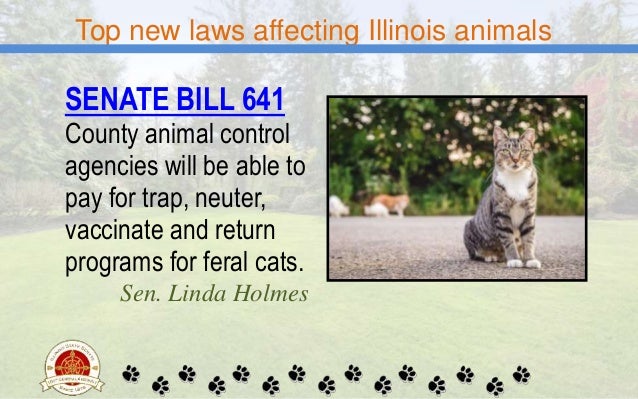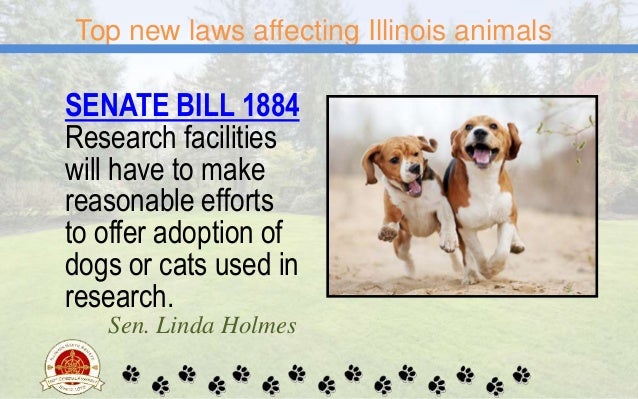Heissinger's wife often was forced to stay indoors, suffering from headaches and congestion, while the soft-spoken farmer worked his cows and crops with smarting eyes and a raspy throat.
On the field next door, pork producers had erected a 3,600-hog confinement facility, where hundreds of thousands of gallons of manure emit gases that have ruined the Heissingers' quality of life. The assessed value of their farm was cut in half because "breezes from the hog confinement across their property are awful," the state tax board concluded.
"A lot of our money is tied up in this farm," Heissinger said. "Our nest egg isn't there no more."
Across Illinois, the nation's fourth-largest seller of pigs, large hog confinements have exploded in number and size. Raising pigs for slaughter in an efficient, factorylike setting, the operations help hold down the price of the most widely consumed meat in the world.
But all that cheap pork comes at a harsh and until now unmeasured cost.
Documenting the impact of this profound shift for the first time, the Tribune found a state regulatory system that failed to protect rural communities as pork producers repeatedly exploited weak Illinois laws to build and expand the massive facilities.
The state Department of Agriculture, which is charged with promoting livestock production as well as regulating it, often brushed aside opposition from local officials to issue about 900 swine confinement permits in the last 20 years. Long-standing community residents were left feeling their rights had been trampled and the laws stacked against them.
In a wide-ranging investigation that spanned dozens of Illinois counties and analyzed more than 20,000 pages of government documents, the Tribune also found that the growth of these confinements has created a persistent new environmental hazard.
Pig waste flowing into rural waterways from leaks and spills destroyed more than 490,000 fish in 67 miles of rivers over a 10-year span. No other industry came close to causing that amount of damage, the Tribune found. Many operators faced only minor consequences; some multimillion-dollar confinements paid small penalties while polluting repeatedly.
The state also does little to investigate allegations of animal cruelty submitted by whistleblowing employees who work for some of Illinois' most prominent pork producers. Inspectors dismissed one complaint, state files show, after simply telephoning executives to ask if it was true that their workers were beating pigs with metal bars.
Other states and local agencies have moved aggressively to address the problems caused by large hog confinements. Illinois has not, the Tribune found, even as consumers demand more humane treatment of livestock and stronger environmental protections.
With the pace of new construction permits accelerating, state authorities say they are doing the best they can to protect neighboring communities and the environment. But they acknowledge that Illinois' Livestock Management Facilities Act gives them few tools to hold confinement owners accountable.
Twenty years after the state law was put in place, critics liken its provisions to a frontier-era timber blockade in the path of a bullet train.
"It is a nightmare of a statute," said retired Judge Steve Evans, who saw three hog confinements built around his western Illinois farmstead in Hancock County — a fourth is planned this summer — and made fruitless attempts to present specific legislative fixes.
Under one of several loopholes in Illinois law that promote the growth of industrial hog confinements, Heissinger's neighbor did not need to notify nearby residents that he had partnered with the giant producer Cargill Pork in 2007 to construct a facility where thousands of hogs would be penned on slotted concrete floors.
The $800,000 hog confinement, on a quiet country road 8 miles southeast of Illinois' capital, was not considered "new" under state statute. Instead, it was deemed an expansion of previous livestock operations — even though the neighbor hadn't kept any pigs since shuttering a hog barn in the 1990s and razing it in 2004. He had maintained only a few dozen milking cows.
Said Heissinger: "We're not the 'poor pitiful us' type, but I think there's got to be laws changed and regulations in place to prevent this type of situation."
Pork industry leaders say modern confinements protect pigs from cruel weather and outdoor predators. The operations help crop growers by purchasing their corn and grain, provide jobs in financially strapped rural counties and enable young farmers to stay on the land.
But for those living nearby, the facilities often bring odors that represent more than an annoyance. Decomposing swine waste releases chemicals like hydrogen sulfide and ammonia that mix with the animal dander and fecal dust floating through confinement facilities. Vented out by giant fans, the gases and airborne particles can cause respiratory illnesses, public health studies have found.
"An awful lot of people have lost the enjoyment of their property," Evans said. "The neighbors of these facilities are impacted very significantly, and many of the people who are impacted are farmers."
As Heissinger's neighbor, Robert Young, began building his hog operation, six area families teamed up to file a civil lawsuit to halt construction. But Illinois law sharply limits the public's standing to challenge permitting decisions by the Agriculture Department, and their suit was dismissed.
At the time, Heissinger stood firmly behind Young. "They are just old-time farmers, like a lot of us. They been on this farm 90 years," he said.
But today he bitterly recalls how Young sat in his kitchen and described landscaping, filters and other measures that would control odors — promises that Heissinger says were never kept.
A "contract grower" who raises pigs owned by big companies, Young told the Tribune he chose to make no adjustments. "We went with what we already had," he said.
Some of the sharpest opposition to hog confinements in Illinois comes not from animal welfare activists or environmental groups but from lifelong farmers, small-town residents and rural township commissioners.
They have one official outlet to question pork producers and government authorities about proposed operations: county-level hearings overseen by the state Agriculture Department.
To trigger a hearing, the new confinement must house more than 2,500 hogs weighing more than 55 pounds or at least 10,000 piglets below that weight. Hearings are held if the local county board requests it or if at least 75 citizens petition.
Filling century-old county courthouses and middle school gymnasiums, farmers and other residents sometimes stand for hours along the walls or crane to hear from hallways as pork industry executives highlight their plans.
But many told the Tribune they walked away believing the meetings were meaningless and their concerns were ignored or ridiculed.
Transcripts of these hearings show that confinement executives often offer a polished visual presentation. Citizens get only three to five minutes each to offer critiques, and sometimes they are hurried along by hearing officers from the Agriculture Department.
Most important, the hearings are strictly informational, and county commissioners' recommendations are nonbinding.
Even when the process moves to the state level, the Agriculture Department lacks the legal authority to deny a permit application. At most, agriculture officials can send an application back with questions.
State data from 1996 through 2014 show that 80 percent of proposed hog confinement projects were built, while the other applications expired without construction for various reasons.
Last year, Menard County commissioners voted against a proposed 9,300-hog confinement near Lincoln's New Salem State Historic Site in central Illinois after citizens at a packed, eight-hour-long hearing voiced concerns that it would damage the region's tourism and rural lifestyle.
But the Agriculture Department approved that permit, and the site began housing pigs in November 2015.
"It was clear that our testimony had no bearing on the case at all," said Sean Londrigan, 45, a retired Air Force test pilot who raises hogs at his family's chemical-free farm in nearby Petersburg. "It was disheartening."
A frequent presence at public hearings is livestock industry representative Nic Anderson, who often challenges locals when they raise concerns about proposed confinements.
In some instances, Anderson would not identify himself when people asked who he was or whom he represented, saying only that he is a resident of Sangamon County, transcripts show. Hearing officers have cut off citizens who try to learn who Anderson is or question him.
Anderson said he did not believe confinement air emissions ruined neighbors' lives. "I do not see that," he told the Tribune. "I really feel there is very minimal impact."
Instead he believes that local people are being manipulated by anti-confinement activists. "Unfortunately community members with genuine concerns become a pawn for somebody else's agenda: ... to stop the project," Anderson said.
Beverly Braniff, a retired McDonough County English teacher who was challenged by Anderson at a 2011 hearing when she expressed concerns about property values, said she was moved by the people who stood up for the community, but the effort was clearly futile.
"The whole manner of the presentation was intimidating — and, I am sure, by design. The state officials, they had already made up their mind and they were enduring the hearing," she told the Tribune.
The lack of public input stands in sharp contrast to other industry sectors whose developments can negatively impact nearby communities.
Before a landfill can be sited, for example, permit applications must be approved by the county and then by the Illinois Pollution Control Board. Local officials also have the ability to block wind farm applications, and the operators must submit detailed public records.
In Livingston County, about 100 miles southwest of Chicago, a wind farm application has prompted more than 100 hours of testimony since 2014, and thousands of pages of company plans have been posted on the county website.
Mike Haberkorn, 69, a small-scale farmer who supplements his grain income by raising about 100 hogs as a contract grower, attended hearings on both the wind farm and hog confinements in the county.
"There was probably 10 times more input on the windmills than there was on the hog farms," Haberkorn told the Tribune. At the hog confinement hearings, "I would say everybody who spoke felt like they were speaking at a blank wall, because everybody kind of knew it was going to go through. The individual speaking didn't really mean anything."
One simple question residents often ask is how many hog confinements are located in their area. But state government does not know exactly how many exist in Illinois. Officials also denied the Tribune's request for the locations of facilities the state does know about, citing U.S. Department of Agriculture rules protecting the privacy of farmers.
By contrast, America's top three pork-producing states — Iowa, North Carolina and Minnesota — make the addresses of confinements readily available online. Several other top-producing states provide that information in response to open records requests, the Tribune found.
Attorney Sheryl Churney, who was hired by a group of Marshall County residents to represent them at a 2014 hearing in central Illinois, said she was shocked by how different the hearing was from a court of law, where rules enforce fairness and impartiality.
"This is an area that really needs a legislative fix because that hearing process and our ability to prepare for it are not provided for," Churney told the Tribune. "The public does not have an opportunity to participate in any meaningful way. There's no due process."
An assistant professor in Western Illinois University's School of Agriculture, Joel Gruver, attended two public hearings in 2011 and said he was astonished by what state law allows hog companies to leave out of their presentations.
At one of the hearings, transcripts show, the firm Professional Swine Management acknowledged only after persistent questioning that the company had secured 970 acres of cropland on which to spread an estimated 6 million gallons of swine manure annually.
Overapplication of pig waste can destroy farmland and lead to toxic runoff that can devastate the environment. But in Illinois, any facility housing 2,500 to 12,499 grown pigs can begin operations without disclosing that kind of information.
Gruver, who describes himself as pro-agriculture and in favor of livestock production, quickly estimated that the producers might need more than 2,000 acres to accommodate the manure from the proposed facility.
"They were frankly unprepared to talk agronomy to people who were well-informed," Gruver told the Tribune. "Their argument was: 'Stop being romantic. Why are you standing in the way of cheap bacon?'"
Warren Goetsch, who began his career as an engineer designing livestock confinements, has crisscrossed the state for the past two decades as chief of the Agriculture Department's Bureau of Environmental Programs, overseeing hearings and reviewing the permitting of virtually every facility.
He calls the state law "a compromise" that has nonetheless improved construction and management practices in the industry — and says the department makes every effort to remain impartial in the battles between pork producers and their critics.
When rural residents express outrage upon discovering the many shortfalls in Illinois law, Goetsch patiently advises them to contact their elected state representatives.
"They then, if they feel the need, will change the law," he said at the hearing in Marshall County last year.
Cheap protein
Confinement operator Jim Scheetz didn't have to endure a public hearing when his family operation partnered in 2008 with Iowa-based pig supplier TriOak Foods to build a row of four hog facilities near the rural village of Gladstone in western Illinois.
In what has become a standard industry blueprint, those confinements were each designed for 2,480 grown swine, just under the 2,500-pig threshold that could trigger a public hearing.
Across the state, the Tribune found 190 Illinois confinements were built to hold 2,400 to 2,499 grown pigs. Since January 2014, more than half of the 129 notices of intent to construct or expand hog confinements involved projects designed to hold that number of pigs, state records show.
Goetsch told the Tribune that those facilities still had to meet state construction standards and pass inspections. "He has to do everything other than stand up and possibly be berated by a few of his neighbors," Goetsch said. "Producers are just following the rules that are in place."
Scheetz and TriOak were among numerous operators that doubled down on the strategy, building multiple confinements of just under 2,500 animal units but filing separate permit applications with the state Agriculture Department. TriOak partnered with others to build additional confinements in the Gladstone area.
Each of Scheetz's structures generates more than 700,000 gallons of swine waste per year, government records show, and the nauseating vapors left some Gladstone families unable to garden, cook out or even walk to their cars without gagging, according to court records and Tribune interviews.
"Nobody hangs their clothes out or keep their windows open," said Annette Harl.
"It just about knocks you out," said retired farmer Dave Work. On bad days, "we eliminate being outside. If you have to go somewhere, you don't lollygag in your yard."
Nine months after Scheetz's complex was completed, one underground waste pit began to leak, sending dark slime through a ditch and into nearby Deep Run Creek, government records show.
By the time farmer Jerry Vantine spotted fish floating belly up in the creek that runs through his land, the discharge had destroyed aquatic life for about a mile, according to state biologists who counted 2,471 dead fish but said those represented only part of the toll.
The state attorney general filed a civil lawsuit seeking penalties for the unhealthy odors and the fish kill. Scheetz resolved the matter in 2011 when one of his companies paid a $17,500 penalty without admitting wrongdoing.
Scheetz told the Tribune he repaired all four structures, placed nylon screens around the exhaust vents that expel the confinement's air and planted trees as a buffer, at a total cost of $65,000.
But nearby farmers say they still suffer from foul odors, and Scheetz assesses the improvements mainly in terms of his own bottom line.
"I don't think it was necessary," he told the Tribune. "It doesn't help productivity, and it doesn't help cash flow. It's just an extra expense."
TriOak officials said they quickly drove to the scene whenever anyone complained and never found odor problems. Any criticism of Scheetz's operation is unfair and limited to a small number of biased and disgruntled neighbors, they said.
"Several of the people complaining also had their own livestock. The perception is, 'My livestock doesn't stink, but someone else's does,'" said Al Muhlenbruck, TriOak's public relations manager.
Scheetz's family operation now runs at least a dozen Illinois confinements holding a total of more than 50,000 grown pigs and stretching through Hancock, Henderson and Mercer counties, as well as in Iowa, government records and interviews show.
It is because of confinements like his, Scheetz told the Tribune, that Illinois pork producers dominate the state's livestock industry — far outstripping poultry and beef — and hold their place in a fierce global market. Illinois' 484 largest confinements sent 12 million pigs to slaughter in 2012, accounting for 91 percent of the state's $1.5 billion in hog sales that year, according to the most recent USDA Census of Agriculture.
"We can raise these pigs the old-fashioned way and increase the cost, but we have to compete with the other proteins out there as best we can," he said. "We've got to produce a lot of pork to make it as cheap a protein as we can."
Records show Scheetz did face a public hearing when he proposed a massive complex for Hancock County in 1999. That was three years after the Livestock Management Facilities Act was passed, and at the hearing he denounced the new regulations.
"I think agriculture has went far enough. I think we've laid down like a bunch of lambs, and we've let people make laws," Scheetz said, according to the transcript.
Neighbor Edith Galloway asked at the hearing if Scheetz would at least layer his million-gallon outdoor manure lagoons with clay to protect nearby wells and streams.
"Edie wants a liner inside the pit. We can add a gold-plated roof to it if you want, but at a certain point they want cash flow," Scheetz said of his hog supplier.
"I've got my statement, Edie. You've had your chance. The County Board doesn't have anything to say about this," Scheetz said. "There's nothing you can do about it."
Stacked cards
In 2012, former Illinois Appellate Court Justice Judy Koehler was laying plans to build a cabin on 300 acres of land in western Illinois where she grew up raising hogs and cattle.
When she learned a large pig confinement would be built on a lot nearby, she appealed to lawmakers to strengthen the livestock facilities law.
The law requires most confinements to be built at least a quarter-mile away from the nearest home and a half-mile from the nearest town. While those setback distances are greater than in many other states, Illinois does not allow local governments to impose more stringent standards or take into account wind and weather patterns, topography and facility features that affect the movement of airborne particles.
Koehler, who also is a former Republican state representative, asked legislators to consider extending the setbacks to 2 miles from a residence, beefing up inspections of facilities built on environmentally sensitive land and giving neighbors standing to oppose confinements in civil court. None of that came to pass.
The Agriculture Department granted the confinement's permit, and the 2,480-pig facility was constructed about 90 days later. The Illinois Pork Producers Association celebrated with a November 2013 open house featuring grilled pork burgers and pork chop sandwiches.
"The act is a toothless tiger. The people are stuck, they are just stuck," Koehler told the Tribune.
Four-tenths of a mile from the new Adams County confinement, Kevin Tushaus says he no longer walks freely through the 37-acre property where he raises apples, peaches and honeybees.
On roughly five days a month, the odor from the confinement comes in waves, sometimes so intensely that "I don't want to be outside for more than 10, 15 minutes because I start getting a headache," he said. "It kind of makes me feel nauseous. One morning it was so strong I just spontaneously threw up."
Some Illinois firms use emerging technologies to cut air emissions. America's third-largest pork producer, The Maschhoffs of Carlyle, Ill., adds odor-busting enzymes to manure pits and uses swine feed additives that reduce harmful chemicals in animal waste, for example. Other firms install air filters or rows of trees to capture emissions. Still, the industry has not consistently adopted such measures in Illinois, according to Tribune interviews.
Daron Duke, a local bank executive and fifth-generation farmer who co-owns the Adams County confinement, said he wants to be a good neighbor but he simply does not believe that odors forced Koehler to abandon her dream of returning to the family farmstead. And Tushaus, he says, is exaggerating.
"They have their side of the story, I have my side. I feel I'm telling the truth, and I'm sure they feel the same way," he said. "Nobody's going to change my mind. That's the way it is."
Before long, Duke said, he plans to double the size of the facility.
Donna Buss became an early crusader for greater setback distances when a confinement raising TriOak pigs was erected a quarter-mile from her western Illinois home. In 1998 she testified before the state agriculture committee about the fetid smell and the suffering it caused her three children.
Facility operator Alan Durkee and TriOak cut ties in 1999, and Durkee paid state officials a total of $10,500 to resolve a lawsuit filed by the state attorney general alleging that the air emissions were causing Buss and other neighboring families to endure sore throats, nausea and vomiting. Durkee's payments also settled violation notices related to two large waste spills into nearby Middle Creek, the latest in 2007.
Durkee did not respond to requests for comment and did not admit wrongdoing in reaching settlements with the state.
Buss said the noxious air emissions still occur but she has given up notifying authorities or trying to reform state laws.
"No matter what sort of argument you have," Buss said, "the cards are stacked for the ag industry."





